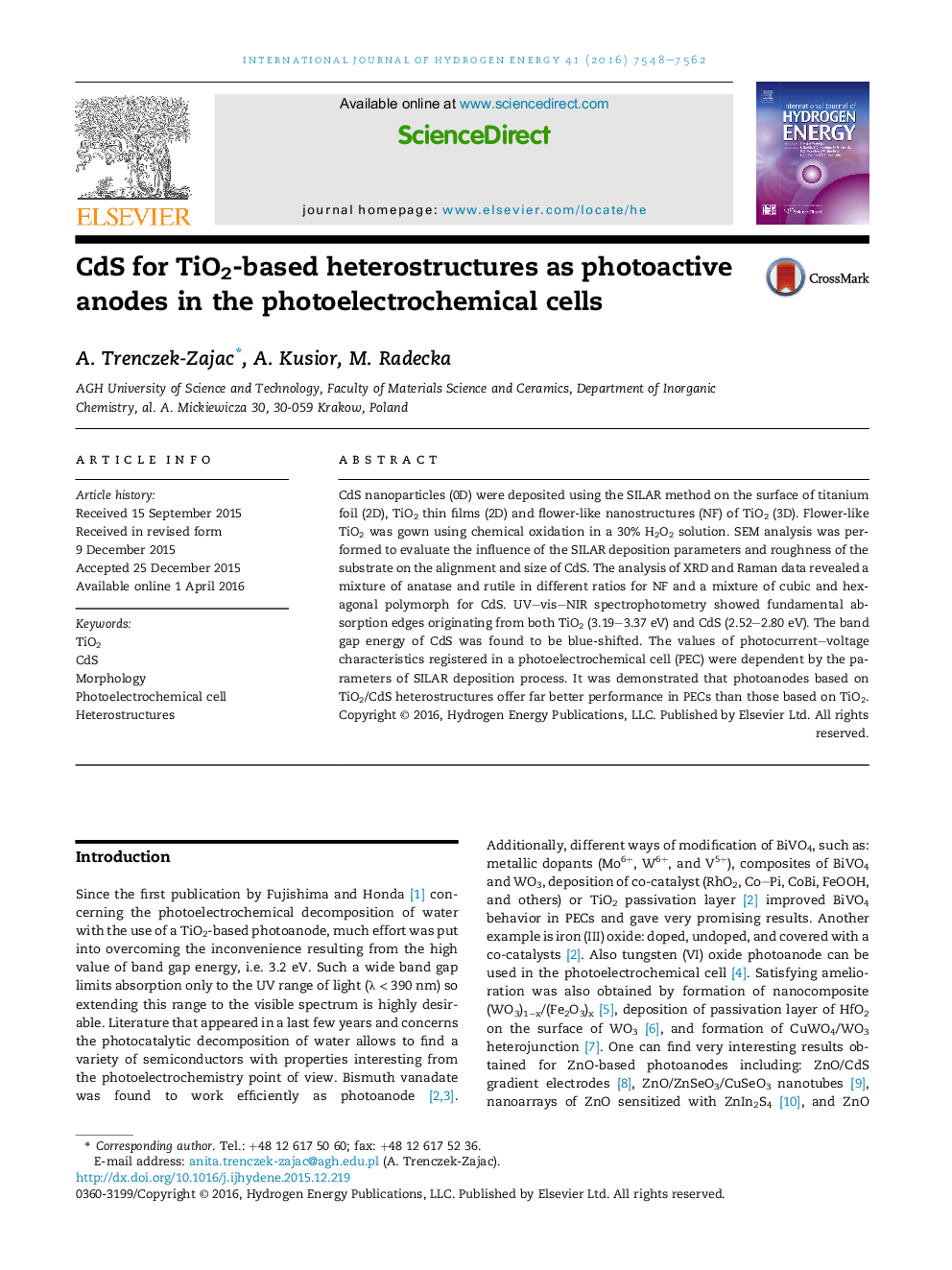| Article ID | Journal | Published Year | Pages | File Type |
|---|---|---|---|---|
| 1268711 | International Journal of Hydrogen Energy | 2016 | 15 Pages |
•Flower-like TiO2 nanostructures are grown in the process of chemical oxidation.•SILAR parameters and roughness of the substrate determines the morphology of CdS.•Spectrophotometry shows fundamental absorption edges results from both TiO2 and CdS.•Iph-Vb characteristics registered in a PEC depends on the parameters of SILAR.•TiO2/CdS heterostructures offer far better performance in PECs than TiO2.
CdS nanoparticles (0D) were deposited using the SILAR method on the surface of titanium foil (2D), TiO2 thin films (2D) and flower-like nanostructures (NF) of TiO2 (3D). Flower-like TiO2 was gown using chemical oxidation in a 30% H2O2 solution. SEM analysis was performed to evaluate the influence of the SILAR deposition parameters and roughness of the substrate on the alignment and size of CdS. The analysis of XRD and Raman data revealed a mixture of anatase and rutile in different ratios for NF and a mixture of cubic and hexagonal polymorph for CdS. UV–vis–NIR spectrophotometry showed fundamental absorption edges originating from both TiO2 (3.19–3.37 eV) and CdS (2.52–2.80 eV). The band gap energy of CdS was found to be blue-shifted. The values of photocurrent–voltage characteristics registered in a photoelectrochemical cell (PEC) were dependent by the parameters of SILAR deposition process. It was demonstrated that photoanodes based on TiO2/CdS heterostructures offer far better performance in PECs than those based on TiO2.
Graphical abstractFigure optionsDownload full-size imageDownload as PowerPoint slide
